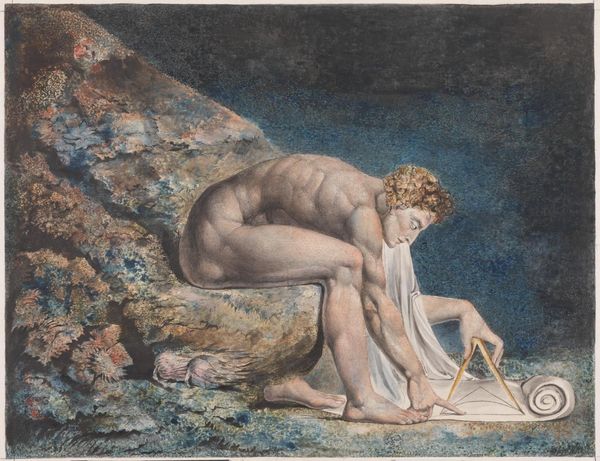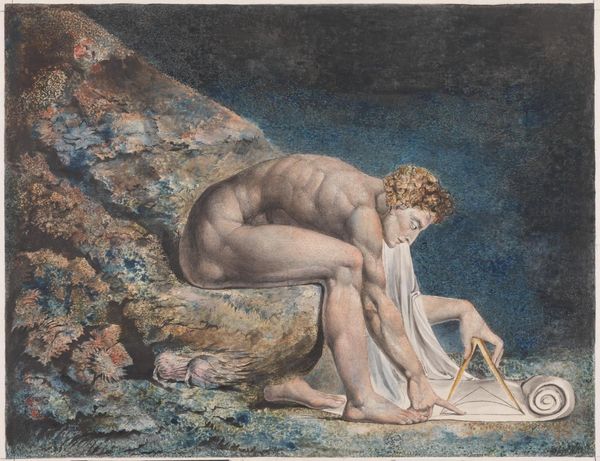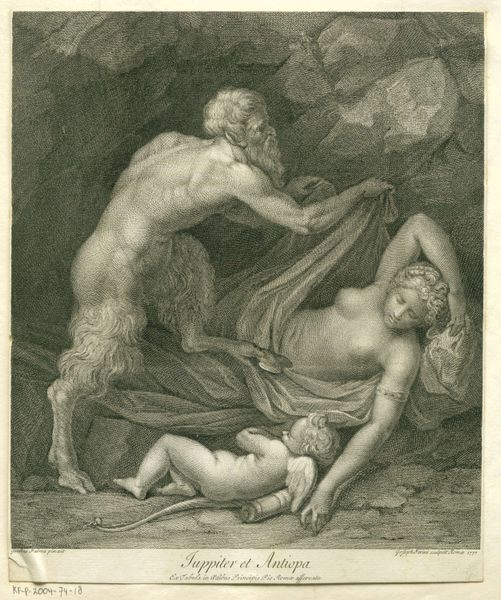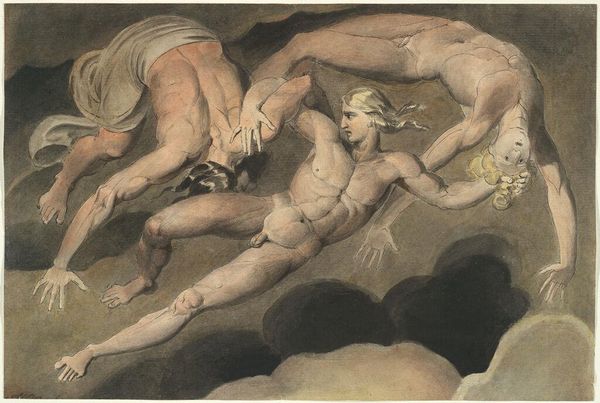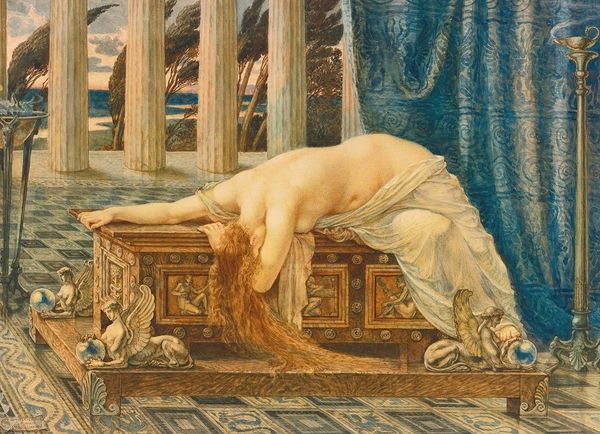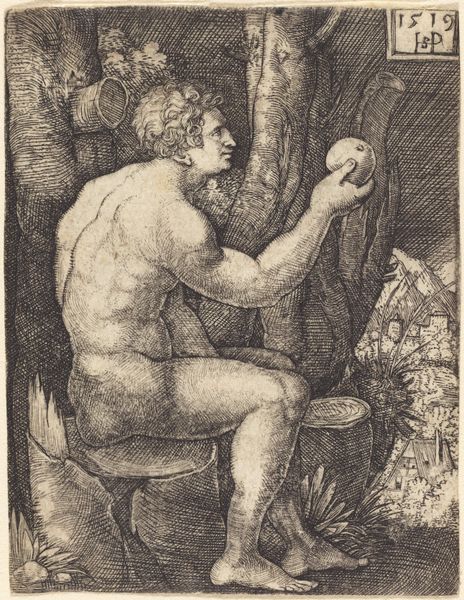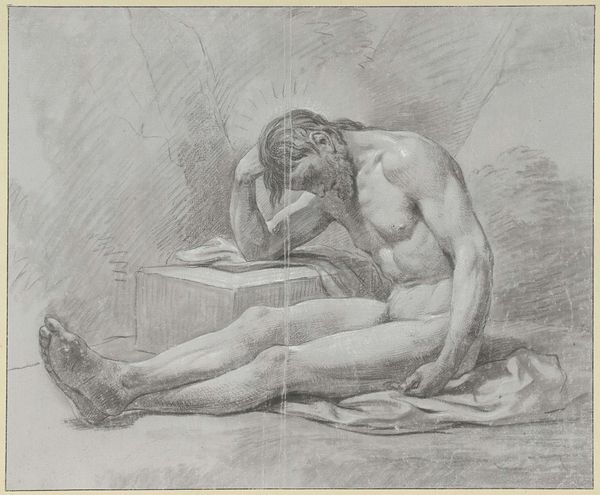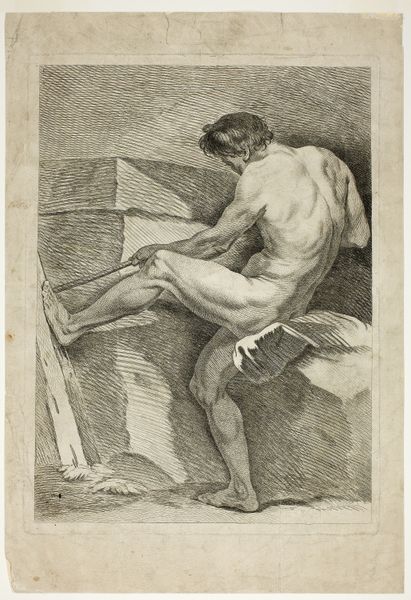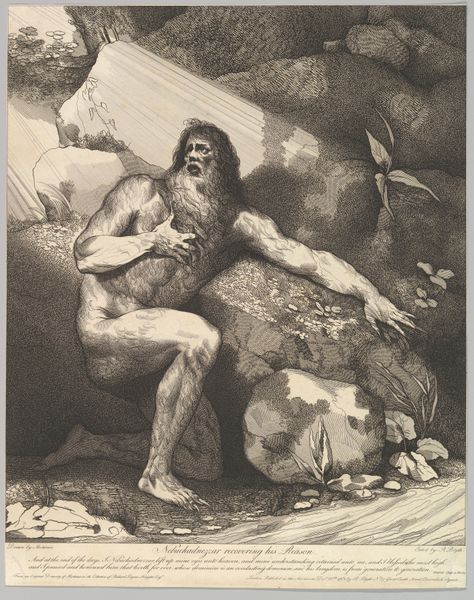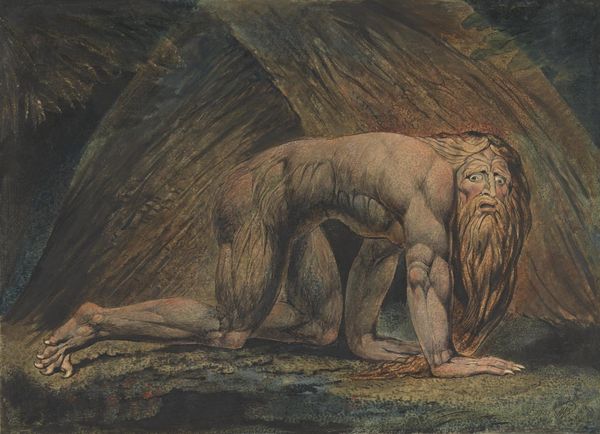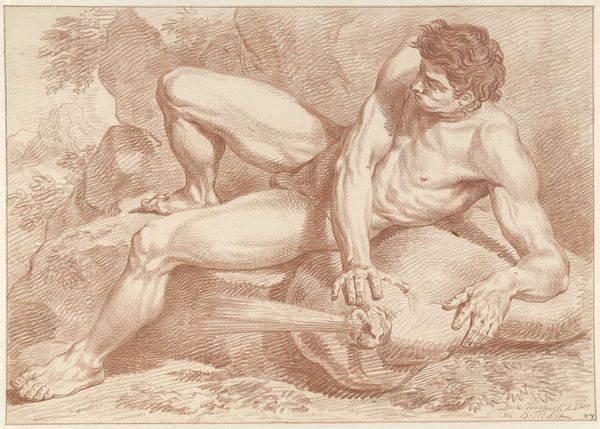
gouache, watercolor
#
portrait
#
gouache
#
allegories
#
allegory
#
narrative-art
#
gouache
#
figuration
#
watercolor
#
intimism
#
romanticism
#
neo-romanticism
#
human
#
history-painting
#
academic-art
#
watercolor
Dimensions: 600 x 460 cm
Copyright: Public domain
Editor: William Blake's "Isaac Newton," made with gouache and watercolor around 1795, is arresting. There's something very deliberate and still about the figure of Newton, almost posed. What do you see in this piece, particularly within its historical context? Curator: It's fascinating how Blake positions Newton. We often celebrate the Enlightenment's emphasis on reason, but Blake, steeped in Romanticism, critiques what he saw as its cold, reductive materialism. Newton here, nude and seemingly detached, uses his compass to quantify the world, seemingly ignoring the natural beauty around him, symbolized by the rock he sits on. Blake is using Newton, the icon, to question the era's dominant worldview. Editor: So, the almost classical depiction of Newton's body is ironic? Is he presenting the great mind as limited, rather than empowered? Curator: Precisely. Consider Blake's social context. Industrialization was rapidly transforming England, driven by Newtonian science. Blake perceived this as a loss of spiritual and imaginative connection. His art served as a counter-narrative, championing imagination and intuition over purely rational thought. Do you notice how the colors also contribute to this feeling? Editor: Yes, the earthy tones surrounding Newton contrast sharply with his almost glowing skin. There's a sense of something being lost, a vibrancy fading. Curator: Exactly. The artwork reflects the societal anxieties of the time and presents them with symbolic and artistic intention. Blake pushes viewers to consider whether scientific advancement comes at the cost of something more profound. Editor: It is much more than a simple portrait; the context really layers the message, making me consider the complex interplay between science, art, and society. Curator: Indeed, seeing art as engaged with larger cultural narratives makes Blake’s critique resonate across centuries.
Comments
No comments
Be the first to comment and join the conversation on the ultimate creative platform.
